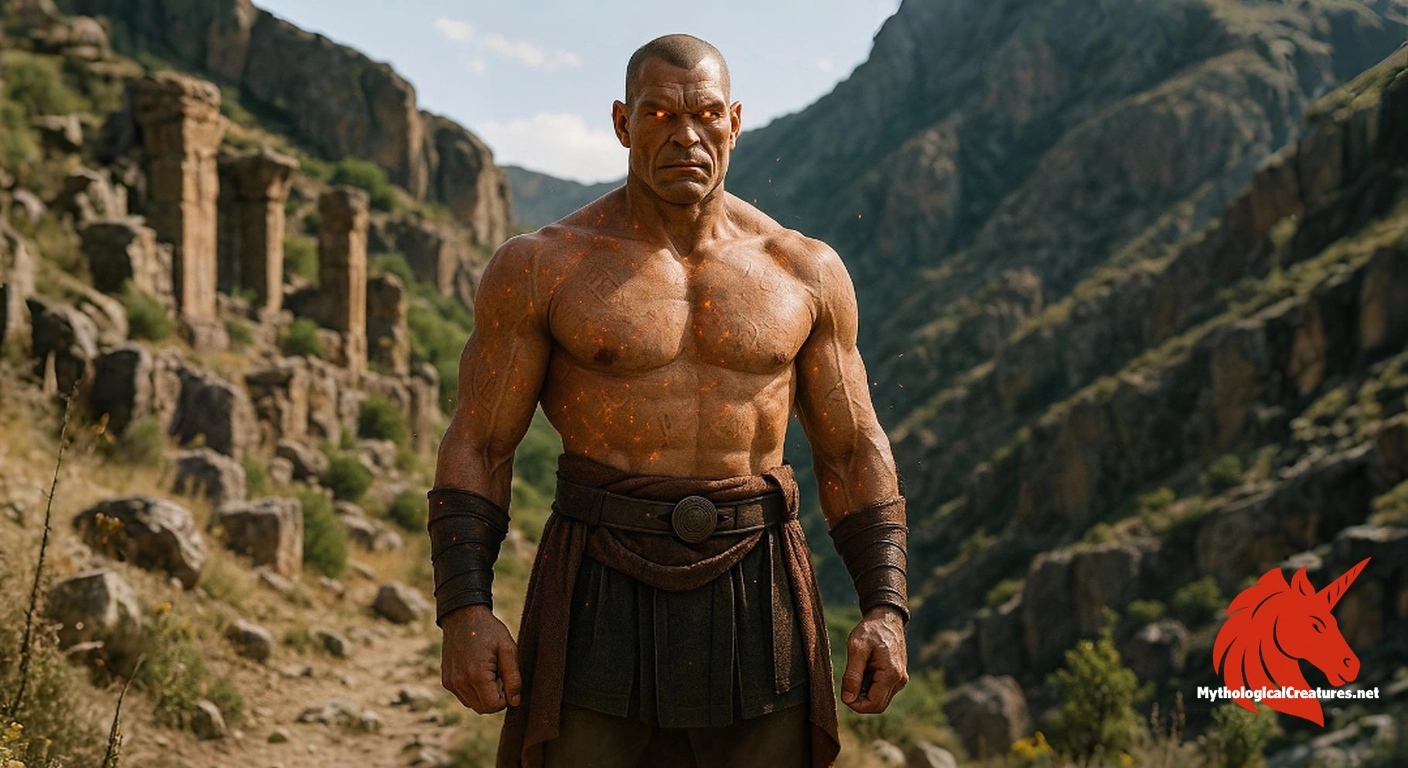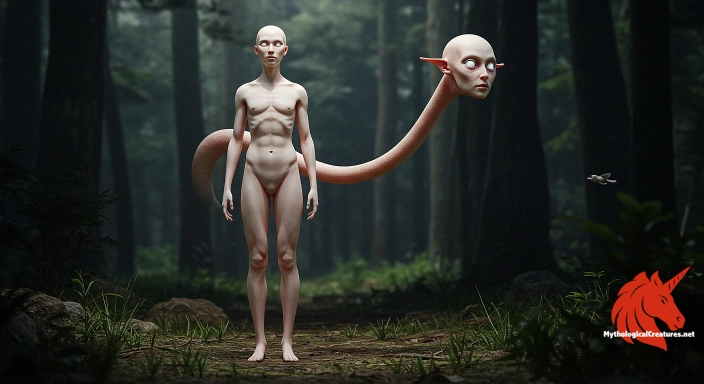Vahagn: Vahagn is a revered warrior god from Armenian mythology, known as the Dragon-reaper and associated with thunder, fire, war, and victory.

Vahagn
Vahagn - Vahagn is a key figure in the pre-Christian Armenian pantheon, revered for his roles as the god of thunder, fire, war, bravery and victory, and symbolising the eternal struggle against chaos.
Origins & First Encounters
Vahagn emerges from Armenian mythology as a formidable warrior deity whose essence is both majestic and imbued with elemental power. His origins lie deep in the ancient pre-Christian traditions of Armenia, where he was revered as the god of thunder, fire, war, and victory. His epithet, the Dragon-reaper, highlights his legendary battle against formidable draconic foes, symbolising the eternal struggle between order and chaos. Recognised not only as a deity of the natural world but also as an emblem of bravery and conquest, Vahagn occupied a central place in the spiritual and cultural life of early Armenian society. He was celebrated in a sacred triad alongside Astghik and Anahit, further cementing his role as a unifying figure in the pantheon. His mythic narrative has traversed centuries, adapting through various cultural influences while maintaining its core themes of heroism and divine might. This divine warrior’s legacy is intertwined with the landscape of ancient Armenia, particularly the district of Taron, where his cult flourished. Vahagn’s enduring presence reflects a vibrant tradition of heroic myth, captivating audiences with tales that continue to inspire and resonate through time.
Source Texts & Tale Variants
Ancient inscriptions and traditional epic narratives provide the cornerstone for our understanding of Vahagn’s myth, though the sources are often scattered and interlaced with oral tradition. Early texts and local legends paint a portrait of a deity whose dynamic deeds were recorded in ritual chants and heroic ballads, some of which were later compiled in medieval manuscripts. Variants of his story have been discovered in regional folklore, where the emphasis on his victory over serpentine monsters enriches his mythic profile. The temple cult practised in the Taron region serves as both archaeological and literary evidence of his once central role in local worship. Over time, differing accounts emerged that portrayed him variously as a fire god, a sun deity, and even a storm-bringer. Some narrative versions, influenced by later Hellenistic thought, link his passions and strength with the celebrated exploits of Greco-Roman heroes. The multiplicity of sources helps to illustrate the evolving narrative of Vahagn, revealing layers of symbolic meaning across periods. Despite the challenges posed by fragmentary evidence, the core themes of courage, celestial power, and triumph continue to define his legend.
Form & Powers
Artistic depictions of Vahagn consistently emphasise his robust and imposing figure, crafted to embody the essence of both physical strength and divine energy. He is frequently illustrated with a well-muscled, heroic physique that visually represents his role as a protector and conqueror. His fiery attributes are often symbolised by a mane or beard that seems to flicker like flames, suggesting an otherworldly connection with the sun and fire. In many representations, his armour is adorned with intricate designs, incorporating motifs of lightning and solar radiance, which accentuate his celestial associations. He is sometimes depicted wielding a burning sword or lance, each weapon a testament to his prowess in combat and his eternal battle against chaos. The dynamic portrayal of his movement and stance conveys both readiness and strength, inviting viewers to contemplate his relentless vigour. Although there is no single definitive iconography, the recurrent visual elements highlight his dual nature as a conqueror of both tangible and metaphysical adversaries. Subtle regional variations in his depiction further illustrate how local artistic sensibilities have adapted his appearance over centuries.
Regional Faces
The cult of Vahagn is most deeply rooted in Armenian tradition, yet echoes of his myth can be discerned in neighbouring cultural spheres as well. In the core regions of Armenia, especially in Taron, his worship was intimately connected with the landscape, with temple complexes dedicated to him standing as centres of both spiritual and communal life. Local narratives consistently cast him as a heroic figure whose battle with dragon-like forces symbolised nature’s untamed ferocity. As Armenian society came under the influence of Hellenistic culture, the attributes of Vahagn began to incorporate aspects of classical heroism, leading to a synthesis of indigenous and Greco-Roman ideals. In these adaptations, his warrior image was sometimes merged with elements characteristic of Heracles, blending raw strength with civilised virtue. Meanwhile, in the borderlands and among neighbouring peoples, his archetype found resonances with similar deities, reinforcing the shared mythological framework across cultures. Variants of his legend in local folklore often emphasise aspects such as his control over fire and thunder, aligning him with natural forces that traverse cultural boundaries. This regional diversity not only underscores the adaptability of his myth but also highlights the interconnected nature of ancient myth-making traditions.
Cultural Parallels
The myth of Vahagn serves as a compelling bridge between different Indo-European traditions, drawing intriguing parallels with a variety of heroic deities. His celebrated feats, particularly the slaying of dragons, mirror similar heroic narratives found in the stories of the Iranian god Verethragna, establishing a cross-cultural dialogue on the nature of divine heroism. The occasional identification of Vahagn with the Greek figure Heracles during the Hellenistic period reinforces a shared cultural admiration for strength and perseverance. His depiction as both a bringer of light and an embodiment of thunder places him in a broader category of deities who command celestial phenomena, a role also attributed to figures in other ancient mythologies. This convergence suggests that the themes of elemental power and martial valour were widely revered, transcending individual cultural boundaries. Comparative analysis of these myths reveals that while each culture has its distinct nuances, the archetype of the warrior confronting chaos remains remarkably consistent. The synthesis of these traditions has allowed Vahagn’s iconography to evolve and resonate with diverse audiences over time. In essence, his myth provides a fascinating insight into how neighbouring cultures interpret the forces of nature and heroism through similar symbolic lenses.
Legacy & Modern Evolution
The evolution of Vahagn’s legacy spans a remarkable continuum from ancient times to the modern era, demonstrating his enduring impact on cultural identity and artistic expression. Initially worshipped as a potent deity embodying both the destructive and regenerative forces of nature, his myth has been intricately woven into the fabric of Armenian collective memory. Over the centuries, the transformation of his image was influenced by the advent of Hellenistic thought, leading to a reinterpretation of his attributes in alignment with Greco-Roman heroic ideals. Following the Christianisation of Armenia, Vahagn transitioned from a literal divine figure to a symbolic icon of national pride and resilience. Contemporary artists, writers, and cultural historians frequently invoke his image as a rallying emblem of strength in the face of adversity. His legendary battles and fiery character have become synonymous with themes of resistance and renewal in modern narratives. The reinterpretation of his myth in literature and visual arts has ensured that his legacy remains relevant in a rapidly changing world. Ultimately, Vahagn’s journey from an ancient war deity to a modern cultural symbol exemplifies the timeless nature of myth, resilient in its ability to inspire successive generations.
Interesting Fact
An interesting observation is that Vahagn’s syncretism with deities like Heracles and Apollo reflects the dynamic interplay between indigenous Armenian traditions and external Hellenistic influences, enriching his mythological significance.
Quick Creature Info
Origin:
Associations:
Our Mythic Legendary Rating:

Also Sometimes Known As:
Habitat:
Supernatural Powers:
Physical Attributes:
Abilities:
Behavior:
Lore:
References
Discover Another Mythical Legend You May Not Have Heard Of?
Uncover the mysteries of ancient folklore and expand your knowledge of legendary beings from cultures around the world.
Dare to Meet the Rokurokubi....
Mythical Disclaimer: The images and data on this site are derived from various historical and literary sources, but we have found that many myths often have multiple versions and interpretations across references, sometimes contradictory. As a result, these creature depictions are artistic interpretations—imaginative blends of folklore, legend, and a dash of AI guesswork. Because creature descriptions vary widely, our illustrations and accompanying information represent our best effort to honor mythology while bridging creative gaps. Enjoy these interpretations—just remember, we've done our best to respect the stories and validate available data, but in the realm of mythology, details often shift, imagination leads the way, and nothing is ever set in stone!
Curated by the Mythological Creatures Team (rev. May 2025)
